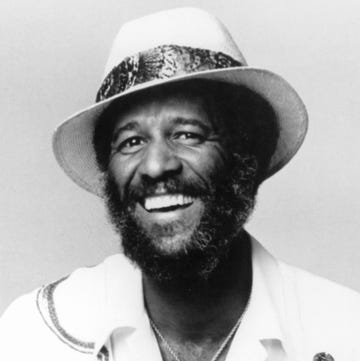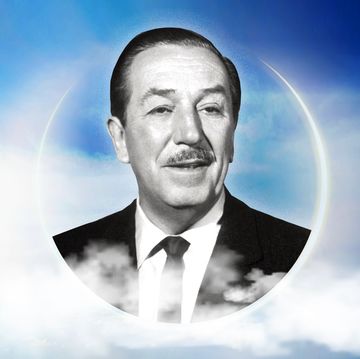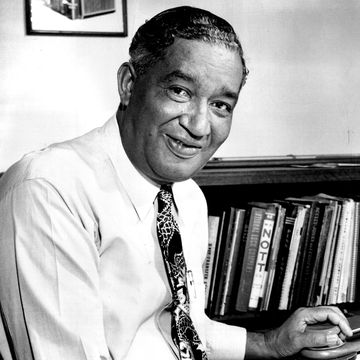Cornelius Vanderbilt
Cornelius Vanderbilt was a famous industrialist who worked in railroads and shipping. He had accumulated the largest fortune in the U.S. at the time of his death, in 1877.

(1794-1877)

Who Was Cornelius Vanderbilt?
Cornelius Vanderbilt began a passenger ferry business in New York harbor with one boat, then started his own steamship company, eventually controlling Hudson River traffic. He also provided the first rail service between New York and Chicago. When he died in 1877, Vanderbilt had amassed the largest fortune accumulated in the U.S. at that time. Vanderbilt is deemed one of America's leading businessmen, and is credited for helping to shape the present-day United States.
Vanderbilt was born on May 27, 1794, on Staten Island, New York, the son of Cornelius and Phebe Hand Vanderbilt. His father instilled in him a blunt, straightforward demeanor, and his mother, frugality and hard work. At age 11, young Vanderbilt quit school to work with his father, ferrying cargo and passengers between Staten Island and Manhattan. Legend has it that at age 16, Vanderbilt ran a two-mast sailing vessel, known as a periauger; the enterprise came with the understanding that he would have to share profits with his parents, who had supplied a loan. Through aggressive marketing, shrewd deals and undercutting the competition—traits that he would practice all his life—he earned more than $1,000 in his first year.
At age 18, Vanderbilt contracted with the U.S. government to supply neighboring outposts during the War of 1812. He learned the art of shipbuilding and navigation in open water. By the end of the war, he had amassed a small fleet of boats and working capital of $10,000 ferrying passengers and freight from Boston to Delaware Bay. He would eventually be given the nickname “Commodore,” which he embraced.
Troubled Family Life
On December 19, 1813, much to the dismay of his parents, Vanderbilt married his first cousin, Sophia Johnson. The couple would eventually have 13 children, with 11 surviving to adulthood. As successful as he would be in business, he was a terrible father and husband. A lifelong misogynist who had wanted more than three sons, Vanderbilt paid little attention to his daughters and is believed to have cheated on his wife with prostitutes. Vanderbilt reportedly had his son Cornelius Jeremiah twice committed to a lunatic asylum. He undertook the same course of action for Sophia at one point as well, after Vanderbilt showed amorous interest in the family's young governess.
Building a Shipping Empire
In 1817, seeing the potential in a new technology, Vanderbilt partnered with Thomas Gibbons in a steamship business, the Union Line. During his tenure with Gibbons, Vanderbilt learned how to manage a large commercial operation and became a quick study in legal matters. Gibbons was ferrying customers between New York and New Jersey, a clear violation of an 1808 state-sanctioned monopoly given to Robert Fulton and Robert Livingston. Aaron Ogden, who was operating Fulton and Livingston’s business and worked with Gibbons, sued the latter boatman for violating the monopoly. Vanderbilt and Gibbons hired Daniel Webster to defend their position. In Gibbons v. Ogden , the U.S. Supreme Court ruled in favor of Gibbons, stating the Constitution’s Commerce Clause gives Congress the exclusive authority to regulate interstate trade. Thus, it was unconstitutional for the New York legislature to give Ogden exclusive shipping rights.
After Thomas Gibbons died in 1826, Vanderbilt wanted to buy the company, but Gibbons’s son didn’t want to sell. Vanderbilt bought several boats and established the Dispatch Line, running between New York City and Philadelphia. Through aggressive marketing and low fees, Vanderbilt forced Gibbons’s son to buy him out.
Vanderbilt soon became known for his sharp business acumen. During the 1830s, he built profitable shipping lines in the New York region, undercutting competitors’ fares and offering top service. Competitors struggled and finally paid him to take his business elsewhere. He then shifted his operations to the Hudson River, going head to head against the Hudson River Steamboat Association, another monopoly. Capitalizing on the populist language of President Andrew Jackson , he named his service the "People’s Line," offering cheap fares for all. The Association bought him out for $100,000 and annual payments of $5,000. Implementing this business model several times made Vanderbilt a millionaire.
But wealth didn’t buy Vanderbilt respectability. In the 1840s, he constructed a large but modest family home at 10 Washington Place, in present-day Greenwich Village. But the city’s elites were slow to accept him, considering him uncultured and rough. His handwriting was nearly illegible, his grammar atrocious and laced with profanity. Yet he didn’t care. He despised ostentation, living a relatively simple and disciplined life.
In 1851, Vanderbilt expanded his shipping business, forming the Accessory Transit Company to transport passengers from New York City to San Francisco via the Nicaraguan isthmus. Again, his timing was perfect. The California Gold Rush brought enormous demand for passage to the West Coast. Though offering a treacherous ride for its users, the Transit Company was a success. By 1852, his competition had had enough and offered him $40,000 a month to abandon his operations. Nearing 60 years old, Vanderbilt was ready for something else. He purchased a large yacht, christened the North Star , and took his extended family on a grand tour of Europe at the cost of half a million dollars.
Building a Railroad Empire
During the Civil War , Vanderbilt donated his fleet's largest ship, aptly named the Vanderbilt , to the Union Navy. By 1864, he had retired from shipping, having amassed nearly $30 million in wealth. At age 70, Vanderbilt turned his attention more closely to railroads, acquiring the New York & Harlem and Hudson Line (which ran along the Erie Canal), and then going after the New York Central Railroad. In a ruthless act during a bitter winter when the Erie Canal was frozen over, he refused to accept Central’s passengers or freight, cutting them off from connections to western cities. Forced to capitulate, the Central Railroad sold Vanderbilt controlling interest, and he eventually consolidated his hold on rail traffic from New York City to Chicago. This new conglomerate revolutionized rail operations by standardizing procedures and timetables, increasing efficiency and decreasing travel and shipment times.
During the 19th century, as rapid developments in technology and innovation enveloped society, many Americans sought meaningful forms of spiritual expression. Some gravitated to more traditional religions while others became fascinated with the occult. After his wife’s death in 1868, Vanderbilt sought the help of the Chaflin sisters, two mediums who claimed they could bring forth the spirits of the deceased. His family however was not impressed and feared their father would fall victim to charlatans. They introduced him to a distant female cousin, Frank Armstrong (so named due to a promise her parents made to name their first child after a family friend), his junior by decades, who became his second wife.
In 1871, Vanderbilt financed a monument to his empire: the Grand Central Depot. The terminal for the New York Central Railroad was constructed with features like elevated platforms, a glass balloon roof spanning all of the tracks and boarding areas only accessible to the passengers. At the city’s insistence, the tracks were submerged below street level to reduce noise and smoke.
Final Years, Death and Legacy
Towards the end of his life, Vanderbilt had no plans to pass along his fortune to charity. He had lived most of his life in relative modesty considering his stratospheric wealth. His sole extravagance seemed to be buying racehorses. However, in 1873, his wife, Frank, introduced him to the Reverend Holland Nimmons McTyeire, who asked Vanderbilt to help him fund a Methodist University in Tennessee. Discussions went on for several years and by the time of his death, Vanderbilt had promised a gift approaching $1 million for what would become Vanderbilt University.
In 1876, Vanderbilt became ill and began an eight-month death march. In keeping with his pugnacious personality, he was a horrible patient, raging at his doctors, calling them “old grannies” and at one point leaving his death bed to lecture reporters who were standing vigil outside his house. He died on January 4, 1877, presumably of exhaustion, brought on by complications associated with intestinal, stomach and heart disorders, which may have also been connected to syphilis.
In his will, he left $90 million, the bulk of his estate, to his son William Henry, who worked in his father's business, and $7.5 million to William’s four sons. His other son, the sickly Cornelius Jeremiah, received a $200,000 trust fund. His wife and daughters allegedly received amounts ranging anywhere from $200,000 to $500,000 and property and stock.
Today, it is estimated that Vanderbilt would have been worth more than $200 billion, if calculating his wealth with the nation’s gross domestic product in 1877. This would make him the second wealthiest person in American history after Standard Oil co-founder John D. Rockefeller . Among Vanderbilt’s descendants are fashion designer Gloria Vanderbilt and her son, television news anchor Anderson Cooper .
Publisher Edward J. Renehan Jr. wrote 2007's Commodore: The Life of Cornelius Vanderbilt while historian T.J. Stiles penned a Pulitzer Prize-winning book on the industrialist's life — The First Tycoon: The Epic Life of Cornelius Vanderbilt (2009).
QUICK FACTS
- Name: Cornelius Vanderbilt
- Birth Year: 1794
- Birth date: May 27, 1794
- Birth State: New York
- Birth City: Port Richmond, Staten Island
- Birth Country: United States
- Gender: Male
- Best Known For: Cornelius Vanderbilt was a famous industrialist who worked in railroads and shipping. He had accumulated the largest fortune in the U.S. at the time of his death, in 1877.
- Technology and Engineering
- Business and Industry
- Astrological Sign: Gemini
- Death Year: 1877
- Death date: January 4, 1877
- Death State: New York
- Death City: New York
- Death Country: United States
We strive for accuracy and fairness.If you see something that doesn't look right, contact us !
CITATION INFORMATION
- Article Title: Cornelius Vanderbilt Biography
- Author: Biography.com Editors
- Website Name: The Biography.com website
- Url: https://www.biography.com/business-leaders/cornelius-vanderbilt
- Access Date:
- Publisher: A&E; Television Networks
- Last Updated: May 27, 2021
- Original Published Date: April 2, 2014

Entrepreneurs

Donald Trump

Kylie Jenner’s Go-To Lip Product Is Only $11

Sean “Diddy” Combs

Selena Gomez

8 Musicians Who Have Built Business Empires

Who Is Music Mogul Scooter Braun?

The True Story of Pop-Tarts and ‘Unfrosted’

The Life and Hip-Hop Legacy of DJ Mister Cee

The Truth About Walt Disney’s Frozen Head

Frederick Jones

Lonnie Johnson
- History Classics
- Your Profile
- Find History on Facebook (Opens in a new window)
- Find History on Twitter (Opens in a new window)
- Find History on YouTube (Opens in a new window)
- Find History on Instagram (Opens in a new window)
- Find History on TikTok (Opens in a new window)
- This Day In History
- History Podcasts
- History Vault
Cornelius Vanderbilt
By: History.com Editors
Updated: March 26, 2020 | Original: April 16, 2010

Shipping and railroad tycoon Cornelius Vanderbilt (1794-1877) was a self-made multi-millionaire who became one of the wealthiest Americans of the 19th century. As a boy, he worked with his father, who operated a boat that ferried cargo between Staten Island, New York, where they lived, and Manhattan.
After working as a steamship captain, Vanderbilt went into business for himself in the late 1820s, and eventually became one of the country’s largest steamship operators. In the process, the Commodore, as he was publicly nicknamed, gained a reputation for being fiercely competitive and ruthless. In the 1860s, he shifted his focus to the railroad industry, where he built another empire and helped make railroad transportation more efficient. When Vanderbilt died, he was worth more than $100 million.
Cornelius Vanderbilt: Early Years
A descendant of Dutch settlers who came to America in the mid-1600s, Cornelius Vanderbilt was born into humble circumstances on May 27, 1794, on Staten Island, New York . His parents were farmers and his father also made money by ferrying produce and merchandise between Staten Island and Manhattan in his two-masted sailing vessel, known as a periauger. As a boy, the younger Vanderbilt worked with his father on the water and attended school briefly. When Vanderbilt was a teen he transported cargo around the New York harbor in his own periauger. Eventually, he acquired a fleet of small boats and learned about ship design.
Did you know? During the U.S. Civil War, Cornelius Vanderbilt donated his largest and fastest steamship, named the Vanderbilt and built for around $1 million, to the Union Navy. The vessel was used to chase down Confederate raiders.
In 1813, Vanderbilt married his cousin Sophia Johnson, and the couple eventually had 13 children. (A year after his first wife died in 1868, Vanderbilt married another female cousin, Frank Armstrong Crawford, who was more than four decades his junior.)
Cornelius Vanderbilt: Steamships
Cornelius Vanderbilt initially made his money in the steamships business before investing in railroads. In 1817, Vanderbilt went to work as a ferry captain for a wealthy businessman, Thomas Gibbons, who owned a commercial steamboat service that operated between New Jersey and New York.
The job provided Vanderbilt the opportunity to learn about the burgeoning steamship industry. In the late 1820s, he went into business on his own, building steamships and operating ferry lines around the New York region. Shrewd and aggressive, he became a dominant force in the industry by engaging in fierce fare wars with his rivals. In some cases, his competitors paid him hefty sums not to compete with them. (Throughout his life, Vanderbilt’s ruthless approach to business would earn him numerous enemies.)
In the 1840s, Vanderbilt constructed a large brick home for his family at 10 Washington Place, in Manhattan’s present-day Greenwich Village neighborhood. Despite his growing wealth, the city’s elite residents were slow to accept Vanderbilt, considering him rough and uncultured.
In the early 1850s, during the California Gold Rush, a time before transcontinental railroads, Vanderbilt launched a steamship service that transported prospectors from New York to San Francisco via a route across Nicaragua. His route was faster than an established route across Panama, and much speedier than the other alternative, around Cape Horn at the southern tip of South America, which could take months. Vanderbilt’s new line was an instant success, earning more than $1 million (about $26 million in today’s money) a year.
Cornelius Vanderbilt: Railroads

He was infamously involved in the Erie Railroad War of 1868, when he battled Wall Street traders Jim Fisk and Jay Gould for financial control of the Erie Railroad. The Erie was controlled by Daniel Drew, who conspired with Vanderbilt to buy up the majority of shares in the railroad. In response, Gould and Fisk issued additional, watered down shares, which Vanderbilt continued to buy. Newspapers of the era reveled in the fight between the robber barons. The Erie Railroad War came to a bizarre close when Gould and Fisk gained ultimate control of the railroad, pushing Drew to retire while paying back Vanderbilt for his watered down stocks.
Undeterred, Vanderbilt went on to other endeavors, and was the driving force behind the construction of Manhattan’s Grand Central Depot, which opened in 1871. The station eventually was torn down and replaced by present-day Grand Central Terminal, which opened in 1913 .
Cornelius Vanderbilt: Final Years
Unlike the Gilded Age titans who followed him, such as steel magnate Andrew Carnegie (1835-1919) and Standard Oil founder John D. Rockefeller (1839-1937), Vanderbilt did not own grand homes or give away much of his vast wealth to charitable causes. In fact, the only substantial philanthropic donation he made was in 1873, toward the end of his life, when he gave $1 million to build and endow Vanderbilt University in Nashville, Tennessee . (In a nod to its founder’s nickname, the school’s athletic teams are called the Commodores.)
The Vanderbilt mansions associated with the Gilded Age, including the Breakers in Newport, Rhode Island and the Biltmore in Asheville, North Carolina , were built by Cornelius Vanderbilt’s descendants. (The 250-room Biltmore estate, constructed in the late 19th century by one of Vanderbilt’s grandsons, is the largest privately owned home in the United States today.)
Vanderbilt died at age 82 on January 4, 1877, at his Manhattan home, and was buried in the Moravian Cemetery in New Dorp, Staten Island. He left the bulk of his fortune, estimated at more than $100 million, to his son William (1821-85).
The Wall Street War to Control the Erie Railroad. ThoughtCo .https://watch.historyvault.com/documentaries


Sign up for Inside History
Get HISTORY’s most fascinating stories delivered to your inbox three times a week.
By submitting your information, you agree to receive emails from HISTORY and A+E Networks. You can opt out at any time. You must be 16 years or older and a resident of the United States.
More details : Privacy Notice | Terms of Use | Contact Us
Famous Entrepreneurs
Biographies, Pictures and Facts
- Cornelius Vanderbilt
Cornelius Vanderbilt also called Commodore was an American entrepreneur and humanitarian who built his fortune by controlling the country’s transportation business. At the time of his death in 1877 his net wealth was worth more than $100 million.
Vanderbilt was born on 27 th May 1794 in Staten Island, New York. As a boy he worked with his father on his ferry in the New York Harbor. He went to school till the age of 11. When he turned 16, he started his own ferry service. His first boat was a periauger. During the 1812 War, Vanderbilt’s business flourished. He delivered supplies to the soldiers and took the soldiers to and from the harbor. From his profits, Vanderbilt purchased more sailing ships. In 1817 the ferry entrepreneur Thomas Gibbons requested Vanderbilt to captain his steamboat from New Jersey to New York. Soon, he was Gibbons business manager. The steamboat entrepreneur was extremely dedicated to his work. Because of his hard work, the ferry service became very lucrative.
Vanderbilt separated from Gibbons in 1929 and started his own boat fleet. It consisted of over 100 steamboats. His steamboats worked the Hudson River; his prices were so cutthroat that his competitors eventually fled the market. He expanded his service from New York to New England and Long Island. His boats and ships were famous for being highly dependable and safe. Consequently his business became stronger and at 40, Vanderbilt was almost a millionaire. In the California Gold Rush of 1849, Vanderbilt initiated an ocean-going service that took people from the West Coast to Central America. During the 1850s Vanderbilt sensed an opportunity in railroad business so he scaled back his interests in the waters and started buying stocks in railroad. By 1960s Vanderbilt was full fledge involved in the railroad business. After just five years in this business, he had earned $25 million. He served on the board of directors of the Central Railroad of New Jersey, Erie Railway, Hartford and New Haven and New York and Harlem. He purchased many railroads in New York to build the Hudson River Railroad and New York Central. Together these formed the greatest corporations of all times.
Vanderbilt was one of the first tycoons of America. His wife Sophia died in 1869 however a year later; Vanderbilt remarried a distant cousin who was almost 40 years younger to him. His son William looked after the business in the final years of his father’s life. Vanderbilt died on 4 th January 1877 at the age of 83. He left most of his wealth to William. He had twelve other children out of which nine were alive at his death. Vanderbilt left an ineffaceable mark on the American industry. He passed his legacy to his son William Henry Vanderbilt. The Commodore lead an epic life with his genius and willpower. He founded a dynasty and earned a vast fortune using his business skills and intelligence. Many say that he has helped shape the American economy in more ways than any other entrepreneur.
- Jorge Paulo Lemann
- Karl Albrecht
- Kathy Ireland
- Kelly Brook
- Kerry Packer
- Kiran Mazumdar-Shaw
- Lakshmi Mittal
- Larry Ellison
- Leonardo Del Vecchio
- Li Ka-Shing
- Liliane Bettencourt
- Louis B. Mayer
- Madam C. J. Walker
- Malcolm Glazer
- Mario Batali
- Mark Zuckerberg
- Markus Persson
- Martha Stewart
- Mary Kay Ash
- Masayoshi Son
- Michael Bloomberg
- Michael Dell
- Mike Ilitch
- Mikhail Prokhorov
- Milton Hershey
- Miuccia Prada
- Mukesh Ambani
- Nandan Nilekani
- Nikola Tesla
- Nolan Bushnell
- Oprah Winfrey
- P.T. Barnum
- Paul Mccartney
- Paul Newman
- Peter Carl Fabergé
- Peter Jones
- Peter Thiel
- Rachael Ray
- Reed Hastings
- Reid Hoffman
- Robert Kiyosaki
- Robert Noyce
- Roman Abramovich
- Rupert Murdoch
- Russell Simmons
- Ruth Handler
- Sam Phillips
- Sara Blakely
- Scott McNealy
- Sean Parker
- Sergey Brin
- Sheldon Adelson
- Simon Cowell
- Sir Richard Branson
- Steve Forbes
- Steven Spielberg
- Theo Paphitis
- Thomas Alva Edison
- Thomas Newcomen
- Tom Anderson
- Vijay Mallya
- Vince McMahon
- Vinod Khosla
- Walt Disney
- Warren Buffett
- Wayne Huizenga
- William Randolph Hearst
- Zong Qinghou
- Akio Morita
- Ananda Krishnan
- Alexis Ohanian
- Aliko Dangote
- Alisher Usmanov
- Alwaleed bin Talal
- Amancio Ortega
- Andrew Carnegie
- Anil Ambani
- Anita Roddick
- Aristotle Onassis
- Asa Candler
- Assis Chateaubriand
- Azim Premji
- Barbara Corcoran
- Barry Diller
- Bernard Arnault
- Berry Gordy
- Bob Parsons
- Boris Berezovsky
- Carlos Ghosn
- Carlos Slim Helu
- Charles Koch
- Charles M. Schwab
- Chris Cline
- Chris Pirillo
- Christopher Poole
- Chuck Feeney
- Coco Chanel
- Colonel Sanders
- Conrad Hilton
- Craig Newmark
- Dave Thomas
- David Geffen
- David Green
- David Sarnoff
- Deborah Meaden
- Dhirubhai Ambani
- Donald Trump
- Dov Charney
- Duncan Bannatyne
- Eduardo Saverin
- Eike Batista
- Ekta Kapoor
- Enzo Ferrari
- Estée Lauder
- Ferit Şahenk
- Gary Vaynerchuk
- George Lucas
- George Soros
- Giorgio Armani
- Gordon Moore
- Greg Norman
- Gurbaksh Chahal
- Guy Laliberté
- Henry J. Kaiser
- Herb Kelleher
- Howard Hughes
- Howard Schultz
- Hugh Hefner
- Hüsnü Özyeğin
- Indra Nooyi
- Ingvar Kamprad
- J. P. Morgan
- J. Paul Getty
- J. W. Marriott
- Jack Dorsey
- James Dyson
- Jenna Jameson
- Jenny Craig
- Jimmy Wales
- John D. Rockefeller
- John Jacob Astor
- John Paul DeJoria
Copyright © 2024 Famous-Entrepreneurs.com

Cornelius Vanderbilt Biography
Cornelius Vanderbilt
Having gotten his feet wet operating the Staten Island ferry in 1810, Vanderbilt then worked for Thomas Gibbons before forming his own very successful and lucrative steamboat business. When the California gold rush increased demand for transportation, he devised a steamship route in 1849, including an overland passage through Nicaragua. By 1862 his interest had shifted to railroads. He acquired stock in the New York & Harlem, then bought the Hudson River Railroad and the New York Central. He continued expanding his holdings to include lines in Michigan and Canada, but he failed to buy the Erie Railroad in 1868 when Daniel Drew , Jay Gould , and James Fisk declared the “Erie Wars,” in which the three managed to manipulate stock to prevent Vanderbilt from buying Erie. Vanderbilt was responsible for the $1 million donation that was used to found Vanderbilt University.
- Daniel Drew Biography
Here are the facts and trivia that people are buzzing about.

Arthinkal Magazine
- Cornelius Vanderbilt: The American Railroad and Shipping Tycoon
Cornelius Vanderbilt Biography – American Business Magnate, Philanthropist, Railroad and Shipping Tycoon, Legacy
by arthinkal · Published April 7, 2024 · Updated May 28, 2024

Cornelius Vanderbilt. Heritage Auction Galleries, Public domain, via Wikimedia Commons
Cornelius Vanderbilt Biography and Legacy
Cornelius Vanderbilt was an American business magnate and philanthropist who played a significant role in shaping the transportation and shipping industries in the United States during the 19th century. Through his entrepreneurial skills and shrewd business decisions, Vanderbilt expanded his operations into steamboat services and later into the railroad industry.
Vanderbilt became known as the “Commodore” due to his early success in the shipping industry. He aggressively competed with other shipping companies, often engaging in fierce business battles to gain control of key routes and markets.
By the time of his death, Cornelius Vanderbilt had amassed one of the largest fortunes in American history, primarily through his investments in transportation infrastructure. His legacy as one of America’s foremost industrialists and businessmen continues to be remembered today.
Cornelius Vanderbilt was born on May 27, 1794, on Staten Island, New York, into a modest family of Dutch ancestry. He was the fourth of nine children born to Cornelius van Derbilt and Phebe Hand. Vanderbilt’s father operated a ferry that transported people and goods between Staten Island and Manhattan.
From an early age, Vanderbilt showed an aptitude for business and entrepreneurship. He left school at the age of 11 to work with his father ferrying passengers and freight across New York Harbor. Even as a young man, Vanderbilt exhibited a keen understanding of the maritime industry and quickly learned the intricacies of operating a ferry business.
After his father’s death when he was 16, Vanderbilt took over the ferry business. He expanded the operation, offering more frequent and efficient service. This marked the beginning of Vanderbilt’s entrepreneurial journey, laying the groundwork for his future success in the transportation industry.
During his early years, Vanderbilt also gained valuable experience and insights by observing the operations of other businesses along the waterfront, which would later influence his strategic decisions as he ventured into steamboat and railroad transportation.
His early life was characterized by hard work, determination, and a natural knack for business, setting the stage for his remarkable rise to prominence in the American business landscape.
Steamboat Business
Cornelius Vanderbilt initially gained experience in the transportation industry by operating ferries between Staten Island and Manhattan with his family. As steam technology began to revolutionize transportation in the early 19th century, Vanderbilt recognized the potential of steamboats and decided to transition into this emerging industry.
In 1817, at the age of 23, Vanderbilt purchased his first steamboat, the “Thomas Jefferson.” This marked his entry into the steamboat business. He quickly learned the nuances of steamboat operations and began to expand his fleet.
Initially focusing on routes between New York and New Jersey, he gradually extended his routes to cover other parts of the northeastern United States, including routes along the Hudson River and Long Island Sound. By offering reliable and efficient service, Vanderbilt attracted passengers and freight shipments, building a loyal customer base.
Vanderbilt was known for his aggressive competitive tactics. He often undercut fares offered by rival steamboat operators and provided superior service to gain a competitive edge. He was not afraid to engage in fierce business battles to gain control of key routes and markets.
Vanderbilt’s aggressive tactics extended to the consolidation of the steamboat industry. He acquired smaller steamboat companies, often through mergers or hostile takeovers, thereby consolidating control over routes and markets. This allowed him to achieve economies of scale and dominate the steamboat industry in the northeastern United States.
Vanderbilt demonstrated adaptability and innovation in his steamboat operations. He continuously invested in new steamboat technologies, improving the speed, efficiency, and safety of his fleet. He also adapted to changing market conditions and regulatory environments, ensuring that his steamboat business remained profitable and competitive.
Through these strategies, Cornelius Vanderbilt succeeded in establishing himself as a formidable force in the steamboat industry.
California Gold Rush
Recognizing the surge in demand for transportation to California due to the Gold Rush, Cornelius Vanderbilt expanded his steamship services to include routes to the West Coast. He operated steamships that transported passengers and cargo from New York to the Isthmus of Panama, where passengers would then cross the isthmus before boarding another steamship bound for California.
Vanderbilt made strategic investments in transportation infrastructure to support the growing demand for travel to California. He invested in the development of the Panama Railroad, which provided a faster and more efficient route across the isthmus, facilitating the transfer of passengers and cargo between the Atlantic and Pacific Oceans.
He also engaged in financial speculation related to the California Gold Rush. He invested in mining ventures and companies involved in supplying goods and services to miners in California, taking advantage of the economic opportunities created by the Gold Rush.
The profits generated from Vanderbilt’s involvement in steamship services and investments related to the California Gold Rush contributed to the expansion of his business empire. He reinvested his earnings into acquiring additional steamships and expanding his railroad interests, further solidifying his position as one of the wealthiest and most influential businessmen in the United States.
Vanderbilt’s activities during the California Gold Rush demonstrated his ability to identify and capitalize on opportunities in the transportation and mining industries, further enhancing his status as a leading figure in American business during the 19th century.
Railroad Business
Cornelius Vanderbilt initially became involved in the railroad industry through strategic investments. He recognized the potential of railroads as a transformative mode of transportation and began purchasing stock in various railroad companies in the 1840s. These early investments laid the groundwork for his eventual entry into the railroad business on a larger scale.
His first major foray into the railroad business came in the 1850s when he acquired control of the New York and Harlem Railroad. This acquisition marked the beginning of his efforts to consolidate and expand his railroad interests. He subsequently acquired control of several other railroads, including the Hudson River Railroad and the New York Central Railroad.
Vanderbilt’s strategy in the railroad business was similar to his approach in the steamboat industry: consolidation and expansion. He sought to consolidate smaller railroad companies into larger, more efficient systems under his control. By acquiring control of key railroads and their associated routes, Vanderbilt created a comprehensive network of railroads connecting major cities and markets in the northeastern United States.
His leadership in the railroad business was characterized by a focus on efficiency and innovation. He implemented operational improvements and technological innovations to enhance the speed, safety, and reliability of railroad transportation. His emphasis on efficiency helped his railroad operations remain competitive and profitable.
While Vanderbilt’s initial railroad interests were concentrated in the northeastern United States, he eventually expanded his railroad empire to other regions. He acquired control of railroads in the Midwest and participated in the construction of transcontinental railroads, further solidifying his influence in the railroad industry.
His leadership in the railroad industry played a pivotal role in shaping the development of railroad transportation in the United States during the 19th century.
Civil War Years
Vanderbilt’s steamship fleet played a crucial role in supporting the Union Navy during the Civil War. He entered into contracts with the U.S. government to provide steamships for naval transport, troop movements, and supply missions. His steamships transported troops, supplies, and munitions along the eastern seaboard and in the Gulf of Mexico, contributing to the Union war effort.
He made substantial philanthropic contributions to support the Union cause during the Civil War. He donated money to fund the construction of warships, purchase weapons and equipment for Union soldiers, and support war-related charities. His financial support helped bolster the Union war effort and provided much-needed resources for the Union Army and Navy.
Vanderbilt’s interests in the railroad industry also supported the Union war effort. The railroads controlled by Vanderbilt played a vital role in transporting troops, supplies, and munitions across the northern states, facilitating the movement of Union forces and materials to the front lines. Vanderbilt’s efficient railroad operations helped strengthen the Union’s logistical capabilities during the conflict.
Cornelius Vanderbilt wielded considerable political influence during the Civil War years. His support for the Union cause and his significant financial contributions earned him favor with Union politicians and military leaders. He used his influence to advocate for policies and actions that he believed would benefit the Union war effort, including measures to strengthen transportation infrastructure and support the Union Navy.
Family Life
Cornelius Vanderbilt married twice in his lifetime. His first wife was Sophia Johnson, whom he married in 1813. They had 13 children together before Sophia’s death in 1868.
He later remarried to Frank Armstrong Crawford in 1869. Despite his busy career, he maintained close relationships with his children and grandchildren, some of whom became influential figures in their own right.
Despite amassing immense wealth during his lifetime, Vanderbilt was known for his frugal lifestyle. He preferred simplicity and practicality in his personal habits, and he famously eschewed ostentatious displays of wealth. His frugality was reflected in his simple attire and modest living quarters.
Philanthropic Activities
One of Vanderbilt’s most significant philanthropic contributions was the endowment of Vanderbilt University in Nashville, Tennessee. In 1873, he donated $1 million to establish the university, which was initially named the “Central University of Central Tennessee.” The university was later renamed in his honor as Vanderbilt University.
In addition to Vanderbilt University, Cornelius Vanderbilt provided financial support to other educational institutions. He made donations to schools, colleges, and universities, including Rutgers University, which received a substantial gift from Vanderbilt to establish a school of engineering.
Vanderbilt also made charitable donations to various organizations and causes aimed at assisting the poor and disadvantaged. He contributed funds to hospitals, orphanages, and relief efforts for victims of disasters. His philanthropy extended to both local and national charitable initiatives.
He was also known to support churches and religious causes through his philanthropy. He made donations to churches and religious organizations, contributing to the construction of churches and the support of religious missions.
Final Years
Despite being in his 80s, Cornelius Vanderbilt remained involved in his various business interests, including his railroad and steamship operations. He continued to oversee his investments and make strategic decisions, although he delegated more day-to-day responsibilities to trusted associates and family members.
Vanderbilt experienced declining health in his later years. He suffered from various health issues, including arthritis and other age-related ailments, which limited his mobility and affected his quality of life.
Cornelius Vanderbilt passed away on January 4, 1877, at the age of 82, at his residence in New York City. His death was attributed to complications from a stroke. Vanderbilt’s passing marked the end of an era in American business, as he was one of the most influential and wealthy businessmen of his time.
Vanderbilt’s legacy remains significant and far-reaching today. His entrepreneurial vision and aggressive business tactics played a crucial role in shaping the transportation industry in the United States during the 19th century. His investments in steamboats and railroads helped expand transportation networks, connect distant regions, and facilitate economic growth and development.
His success as a businessman and investor cemented his reputation as one of America’s foremost industrialists. His strategic approach to business, emphasis on efficiency and innovation, and willingness to take risks set a precedent for future generations of entrepreneurs.
Vanderbilt’s philanthropic activities reflected his desire to give back to society and support causes that he deemed worthy. His contributions to education, healthcare, and charitable organizations left a lasting impact and helped improve the lives of many individuals and communities.
Today, his name and legacy remain iconic symbols of wealth, success, and entrepreneurship in American history. He is often remembered as one of the wealthiest individuals of his time and as a prominent figure in the Gilded Age, a period characterized by rapid industrialization and economic growth.
Vanderbilt’s influence extends beyond business and philanthropy and has left a mark on American culture. His life and achievements have been celebrated in literature, art, and popular culture, contributing to his enduring legacy as a symbol of American enterprise and ambition.
The legacy of Cornelius Vanderbilt continues to be felt in various aspects of American society, from transportation and business to philanthropy and culture. He remains a towering figure in the annals of American history, revered for his contributions to industry, commerce, and philanthropy.
Interested in learning about other successful entrepreneurs?
Check out the following articles:
- John D. Rockefeller
- Andrew Carnegie
- Madam C. J. Walker
- Next story Niccolò Machiavelli: Father of Modern Political Philosophy
- Previous story Iconic Artwork: Christ in the Storm on the Sea of Galilee by Rembrandt

IMAGES
VIDEO
COMMENTS
Cornelius Vanderbilt began a passenger ferry business in New York harbor with one boat, then started his own steamship company, eventually controlling Hudson River traffic. He also provided the ...
Cornelius Vanderbilt (1794‑1877) was a shipping and railroad tycoon, and a self‑made multi‑millionaire who became one of the wealthiest Americans of the 19th century.
Cornelius Vanderbilt (May 27, 1794 - January 4, 1877), nicknamed "the Commodore", was an American business magnate who built his wealth in railroads and shipping. [1] [2] After working with his father's business, Vanderbilt worked his way into leadership positions in the inland water trade and invested in the rapidly growing railroad industry, effectively transforming the geography of the ...
Cornelius Vanderbilt (born May 27, 1794, Port Richmond, Staten Island, New York, U.S.—died January 4, 1877, New York, New York) was an American shipping and railroad magnate who acquired a personal fortune of more than $100 million.. The son of an impoverished farmer and boatman, Vanderbilt quit school at age 11 to work on the waterfront. In 1810 he purchased his first boat with money ...
Childhood & Early Life. Cornelius Vanderbilt was born on May 27, 1794, in Port Richmond, Staten Island, New York, to Cornelius van Derbilt, a seaman, and his wife, Phebe Hand. He had many siblings but most of them died at a young age. At the age of 11, Vanderbilt left school and started working, as a boy, on his father's ferry in New York ...
Cornelius Vanderbilt also called Commodore was an American entrepreneur and humanitarian who built his fortune by controlling the country's transportation business. At the time of his death in 1877 his net wealth was worth more than $100 million. Vanderbilt was born on 27 th May 1794 in Staten Island, New York.
Cornelius Vanderbilt. BORN: May 27, 1794 • Staten Island, New York DIED: January 4, 1877 • New York, New York Entrepreneur; railroad magnate. Although Cornelius Vanderbilt died just as the Gilded Age began, he is included in that era's history because of his phenomenal wealth. (The Gilded Age was the period in history following the Civil War and Reconstruction [roughly the final twenty ...
Cornelius Vanderbilt's biography portrays a quintessential American success story, rising from modest beginnings to one of the wealthiest and most influential industrialists of the 19th century. Born on May 27, 1794, in Staten Island, New York, Vanderbilt demonstrated an early knack for business, starting his first ferry service at the young ...
Cornelius Vanderbilt. industrialist, financier. Born: 5/27/1794. Birthplace: Port Richmond, N.Y. Having gotten his feet wet operating the Staten Island ferry in 1810, Vanderbilt then worked for Thomas Gibbons before forming his own very successful and lucrative steamboat business. When the California gold rush increased demand for ...
Cornelius Vanderbilt Biography and Legacy. Cornelius Vanderbilt was an American business magnate and philanthropist who played a significant role in shaping the transportation and shipping industries in the United States during the 19th century. Through his entrepreneurial skills and shrewd business decisions, Vanderbilt expanded his operations ...